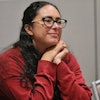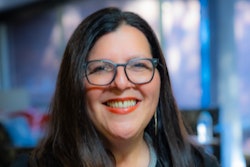Today, higher education in the U.S. is facing signifi- cant challenges, most notably those resulting from the economic downturn. Within the 10-campus University of California (UC) System, faculty and staff salaries have been reduced by 5 to 10 percent, and tuition fees are expected to increase by nearly 30 percent next year. However, this budget crisis both masks and exacerbates a much deeper and more profound challenge. Public higher education in California is falling short in addressing the educational needs of the largest and fastest-growing segment of the state’s population — Latino students. In the UC system, the Latino student population is only 5 percent, whereas more than 36 percent of California’s population is Latino.
To date, little or no progress has been made in addressing this disparity. Now more than ever, to reach our state’s largest minority population it is logical to turn to more flexible and scalable teaching methods and initiatives. One of these is OpenCourseWare (OCW), a free and open digital publication of high-quality educational materials, organized as courses.
Open courses pose two key advantages over the traditional classroom environment. First, open courses are not limited by geography or number of users, thereby making their reach and accessibility virtually unlimited; open courses also conserve resources by eliminating the need to create the same course at multiple institutions. Second, open courses often form the basis of new and focused learning communities composed of counselors and teachers who are vitally concerned with and willing to continually improve and update the open course.
OCW, particularly when combined with active learning communities, can play an important role in three areas that are critical to attracting and educating minority students: 1) creating a “college-going” culture; 2) helping students select, apply to and arrange financing for their education; and 3) helping students to be more successful once they are enrolled in higher education.
Creating a “college-going” culture. For there to be more minority graduates, more minority students must want a college education, and they must be supported in that aspiration by their parents and educators. There are several factors discouraging minority students from applying to college — obligations to family responsibilities, short-term loss of economic productivity, direct costs of higher education, intimidating nature of the college environment and academic cultures, and a shortage of positive role models.
OCW can help address these issues. First, an open course for K-12 teachers and counselors could be created to capture best practices in promoting minority college enrollment. Second, an open course for high school students and their parents could be developed to address the importance of a college education, including a demonstration that valuing a college education does not necessarily conflict with other values generally embraced by a particular minority.
Helping students select, apply to and arrange financing for the college of their choice. An open course on “How to Finance Your College Education and Successfully Select and Apply to The Right College” could inform students and their parents. This course could be combined with the aforementioned course on the value of a college education.
Most importantly, college-level open undergraduate courses could be made available to minority students. Students need to experience a low-risk, anonymous, self-administered assessment of their abilities to be successful in college — and a set of open courses could satisfy this need. Students could take these courses before they enroll in college with support and guidance from volunteer members of the community of interest.
Helping students be successful. Enrolling more minority college students often leads to disappointment when the dropout rate for such students is high. Research has shown that at-risk students drop out of college at rates much higher than the general population — underscoring the need for continuous encouragement and help.
Again, OCW can play a role. Since there is a remarkable conformity in the intellectual coverage of the 25 most commonly taught undergraduate courses and a great deal of open educational resources (OER) already exist around these courses, minority-serving institutions can create relevant and useful learning experiences based on OCW and OER at reasonable costs. For maximum effectiveness, open courses would require the creation of a learning community, which is easily supported by new technology. Social networking Web sites such as Facebook, MySpace, and LinkedIn can help build a broader learning community by offering students the opportunity to interact with other students — even those enrolled at other institutions — and volunteer tutors.
Minority-serving institutions can join the OER and OCW communities and create such a learning community among themselves. I encourage institutions to join the OpenCourseWare Consortium, at ocwconsortium.org. The consortium, pioneered by the Massachusetts Institute of Technology, is a collaboration of nearly 200 higher education universities from around the world that have produced more than 9,000 open courses.
The OCW and OER movements are here to stay. It is not a matter of whether minority-serving institutions get on board; it is a matter of when. Let the “when” be “now.”



















